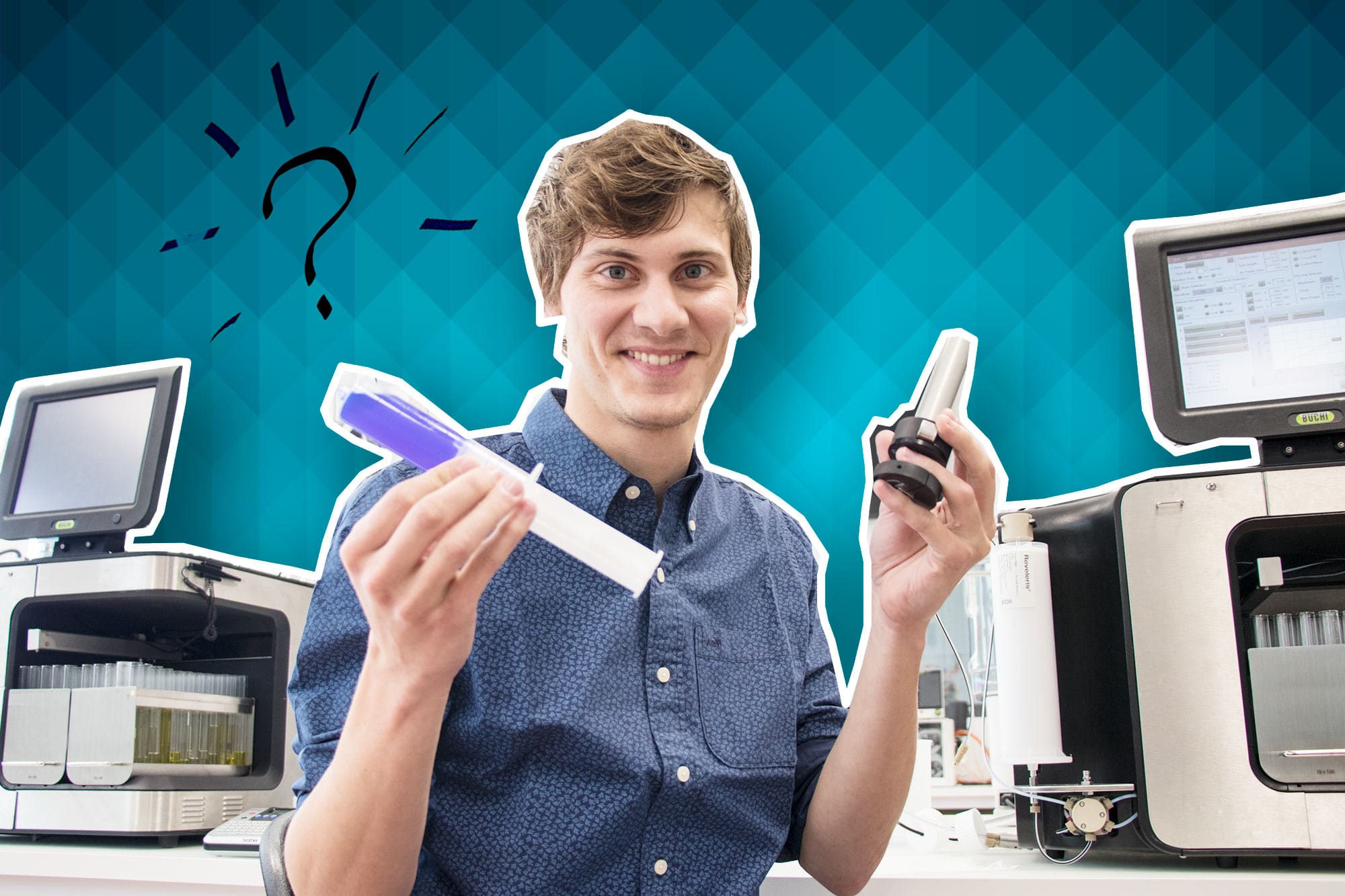Putting safety first during the chromatography process
Lab coats and gloves aside, there is a lot more users can do to protect themselves, their sample and their surroundings while performing purifications. If you can quickly and efficiently react to unexpected situations during the chromatography process, you maximize your chances of achieving a successful separation. In this post, I try to give you a few safety insights, so you can perform your experiments more confidently and with a peace of mind.
This Easter Sunday, we visited our neighbors as their little daughter went on a wild Easter egg hunt. The Easter bunny was very kind this year and presented her with her very first rollerblades. Unfortunately, the silly bunny had forgotten to bring along elbow, wrist and knee guards. But there was no way of stopping the little girl from trying out the rollerblades. She spent hours practicing on the street with her bike helmet on, until she finally took a fall that bloodied up her elbow.
Luckily, it was nothing that a little bit of ice cream couldn’t fix and she was back on the rollerblades in no time.
We in the lab, function similarly. We cannot wait to experiment and often put safety second in our excitement to try things out and get things done. Unfortunately for us, the consequences of improper protection could be much direr than a scrape on the knee.
When it comes to chromatography, users and samples are at highest risk of incidents during set-up and hands-on times of the chromatography process. Potential accidents could also result in uncontrollable release of harmful substances into the surroundings.
Unexpected situations could arise from the user’s own bench or from experiments running in parallel elsewhere. Because we often ignore the issue of safety, I’d like to dedicate this post to ideas on how to better guard yourself, your sample and the environment during purification.
Protection at your own bench
Operators should take the time to learn about the safety features of their chromatography unit. A system like Pure for example is equipped with sensors that monitor vapor, pressure and solvent levels to quickly alert the user to any potential problems. These sensors combined with RFID technology help protect operator health and sample integrity while improving the performance of the chromatography system.
Users should also be aware of how to operate their chromatography unit well. A chromatography machine with intuitive system control helps maximize sample safety. A user-friendly interface, integrated ELSD technology and universal sample injection sites all help reduce the chance that a sample is lost during the run.
Additional safety features such as solvent filters offer improved environmental protection. These filters prevent solid particles from entering the tubing of the system, reducing any damage or clogging of the chromatography machine. Optimally, the chromatography unit should also be very simple to clean and maintain, as proper care helps extend the lifetime of the product and reduces the environmental impact of purchasing new system parts.
Protection from neighbouring benches
Potential risky situations could also arise from experiments in the proximity of the user’s chromatography run. One of the best ways to protect yourself from such incidents is to optimize lab space. Instruments with compact designs are essential in achieving this goal. The Pure system, for example, combines UV and ELS detectors, as well as flash and prep HPLC into one system, eliminating the need for multiple machines that congest the laboratory space. Pure can also be safely operated outside the fume hood, thanks to a closed fraction collector bay, helping to free up busy fume hoods.
The best way users can protect themselves from the lab is to reduce the amount of time spent there.
Laboratory equipment with remote control possibilities could be beneficial in reducing hands-on lab time. For example, Pure enables users to monitor and control their chromatography process from a PC, tablet or smart phone, minimizing the amount of time scientists need to be physically present in the lab.
If you are interested in more tips on safety during chromatography, then make sure you check out the Pure safety tips booklet and my previous blog posts on minimizing hazards during chromatography and maintaining columns and cartridges properly.
And my little neighbor has since acquired proper elbow, knee and wrist guards and is already a little master at rollerblading. Funnily, watching her learn how to bike made me think of how useful TLC data is for performing flash and prep HPLC. I even dedicated a previous blog post on the topic. I cannot wait to see what she learns next and if it will make me think about chromatography yet again. Stick around to find out!
Till next time,


WANT TO STAY IN TOUCH?
Click on the button and receive the latest posts directly in your messenger!
Related Posts
3rd August 2018
Top tips on how to save time in chromatography
Get some great suggestions on how you can speed up your chromatography runs and save valuable time →
7th February 2019
Three chromatography problems the new Pure system solves
There are challenges in chromatography when it comes to user, sample and environmental safety. See how the Pure chromatography system sets out to solve them →
3rd April 2018
How to do sample introduction in Flash Chromatography?
When introducing a sample in flash chromatography, are you going for Wet or Liquid Loading? Learn about the two sample introduction techniques and how they influence the sample loss during the purification process →
5th July 2018
How to overcome limitations in flash chromatography with an ELSD
Find out how ELSD functions and what benefits this detector can bring to your chromatographic experiments compared to UV detectors alone →






